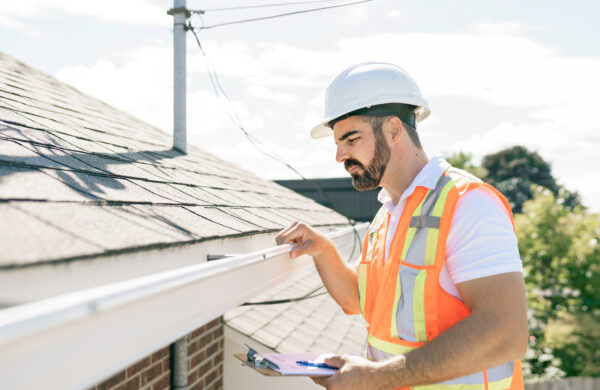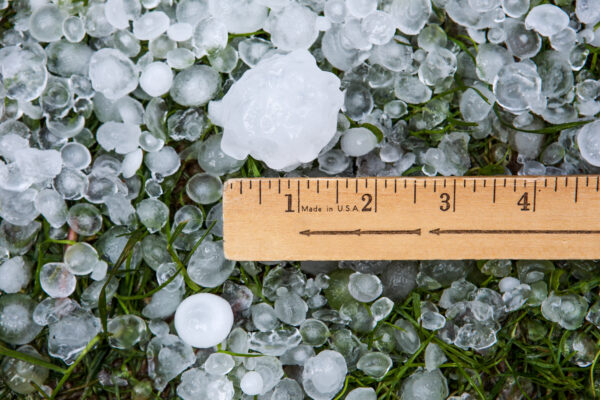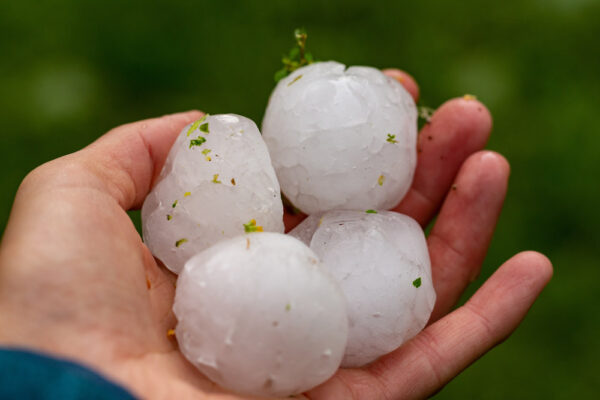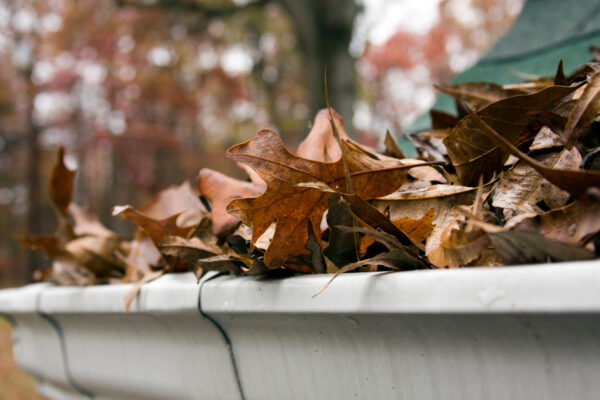
How Homeowners Insurance Covers Roof Hail Damage
Homeowners insurance is your safety net when a hailstorm wreaks havoc on your roof. Before a conversation with a professional roofing contractor, get started with these tips.The volume of traditional, oxidized roofing shingles piling up in landfills after hailstorms is so great it has begun to shape municipal policy and homeowners insurance coverage. The good news is more insurers are covering roof repairs or replacement with impact-resistant roofing shingles which divert roofing materials from prematurely entering landfills. So, if you’re wondering how homeowners insurance covers hail damage to your roof, read on for details.
In July 2019, over 10,000 Fort Collins [Colorado] homes were impacted by a massive hailstorm, requiring many roof replacements in 2020 and 2021…Fort Collins now requires Class 4 impact-resistant shingles, which will hopefully help prevent roofing waste due to hailstorms in the future.—City of Fort Collins
What’s Covered?
Most standard homeowners insurance policies include dwelling coverage, which covers the structure of your home, including the roof. If a hailstorm pelts your roof and causes damage like cracked shingles, holes, or leaks, your insurance is there to help cover the costs of repairing or replacing the roof.
Coverage Limits and Deductibles
Every insurance policy has coverage limits, meaning the maximum amount an insurance company will pay for a covered claim. It is crucial to know your policy’s limit to ensure it is enough to cover potential damage. There’s also the deductible, or the amount you’ll have to pay out of pocket before your insurance kicks in. For hail damage, some policies might have a specific deductible called a ‘wind and hail deductible,’ which can be a percentage of your home’s insured value rather than a fixed dollar amount.

How to File a Homeowners Insurance Claim for Hail Damage
- Assessment: If you suspect hail damage to your roof, the first step is to look at the roof for signs of impact. Since climbing atop most roofs can be dangerous, we typically recommend homeowners contact a professional roofing contractor to assess the damage. A word of warning, however; hail damage can be hidden. What might look like minor dents or superficial bruising to your shingles can lead to more significant issues over time.
- Documentation: Take photos of the damage and keep any receipts if you need to make temporary repairs to prevent further damage. Documentation is key to supporting your claim. Include pictures of hailstones if you can safely collect them, as this can help prove the severity of the storm. Photos of the storm’s impact on your neighborhood might be additionally helpful. Since many homeowners have a smartphone camera on hand, this process has become easier. Some insurance providers even offer phone apps where policyholders can upload images directly to support their claims.
- Contact Your Insurance Agent: Report the damage to your insurance company as soon as possible. They will guide you through the claims process, which usually involves filling out some forms and providing the documentation you’ve gathered.
- Adjustment and Estimate: An insurance adjuster will visit your home to inspect the damage and provide an estimate for repair or replacement costs. They will assess the extent of the hail damage, looking for things like broken shingles, damaged flashing or gutters, and compromised roof vents.
- Hiring a Roofing Contractor: Once your claim is approved, the next step is hiring a roofing contractor to handle repairs. We typically recommend a Malarkey Certified Residential Contractor, a professional with specialized training and experience. Some contractors may even specialize in hail damage repairs and have experience dealing with insurance claims. Be sure to get multiple estimates to ensure you are getting a fair price. If you had a contractor inspect your roof for damage initially, they might even deduct any inspection costs from the repair work.

Factors That Influence Coverage
Several factors can affect how much of the roof damage is covered:
- Age and Condition of the Roof: If your roof is older and brittle, the insurance payout might be adjusted based on the depreciation of the roofing materials. Some policies might not cover older roofs, or the payout might be less than a newer roof. Newer roofs or those made from more hail-resistant materials might get better coverage.
- Previous Claims: If you’ve made multiple claims in the past, this could impact your coverage or cost of insurance premiums. Some insurance companies might be hesitant to cover repeated damage, especially if it’s from similar types of events.
- Roofing Materials: The type of roofing material can also influence the coverage. Some materials, like impact-resistant shingles, are more durable and have better resistance to hail damage, which might affect how your claim is handled.
Preventative Measures
To avoid future headaches, consider taking preventative measures:
- Impact-Resistant Shingles: Investing in impact-resistant shingles can reduce the likelihood of damage and even qualify you for an insurance discount (be sure to ask your provider about this aspect). These shingles are designed to withstand the impact of hailstones and can significantly extend the life of your roof.
- Regular Inspections: Regular roof inspections can help identify potential issues before they become major problems. Having a professional roofing contractor check your roof after severe weather events is highly recommended.
- Maintenance: Keeping your roof in good condition through regular maintenance can help minimize damage and prolong its lifespan. This includes cleaning gutters, replacing damaged shingles, and checking flashing and vents.

Prepare for the Worst, Hope for the Best
Dealing with hail damage following a storm can be stressful, but understanding your homeowners insurance policy can make the process smoother. Make sure to review your policy annually, especially before hail season, to ensure you have adequate coverage. If you’re ever in doubt, don’t hesitate to contact your insurance agent for clarity. For roof repairs, choose a professional roofing contractor with hail damage experience. This ensures the job is done right and your home is protected for the future.


